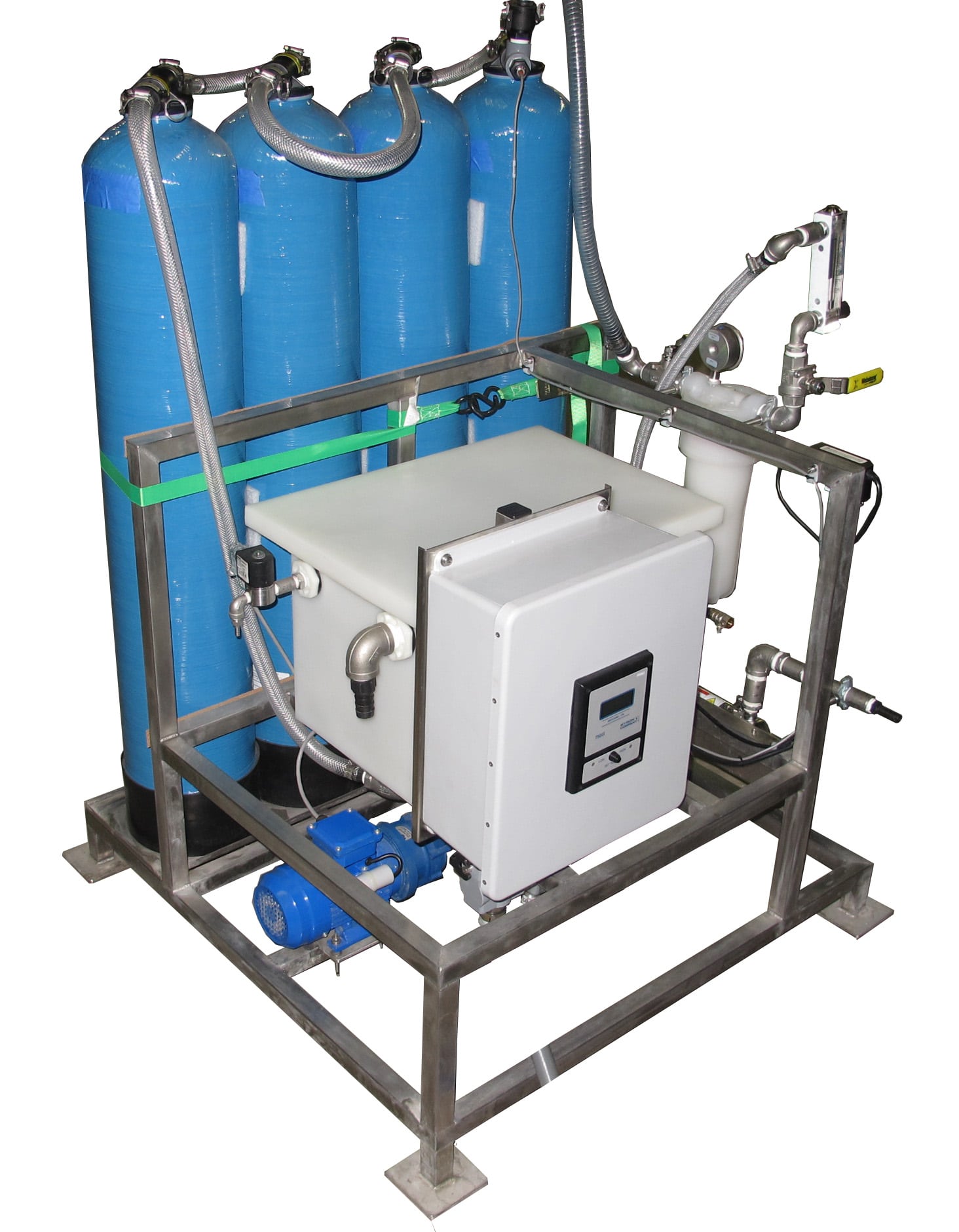Rinsing Parts Effectively in Aqueous Ultrasonic Cleaners
When purchasing a new aqueous ultrasonic cleaner, one of the questions you will be asked by our engineers is the level of cleanliness required on the parts when they exit the system. While many customers will require “zero residue” cleaning results, where no remaining contaminants of any kind remain on the parts, others may accept parts with “water spots” left on the product. The quality of the cleaning result produced by any aqueous cleaning system will be largely dependent upon the quality of the water in the final rinse stage just prior to the drying operation, and if zero-residue results are required, rinsing parts in deionized water is required.
How many rinsing tanks are required?
The cleaning system purchased for a given ultrasonic cleaning application must include enough rinsing tanks to produce the level of cleaning result required. The greater the number of rinsing tanks, the less water that will be required to maintain adequate purity in the final rinse tanks. Each time a basket is transferred from the ultrasonic cleaning tank to the rinsing tank, detergents are also transferred into the rinse, thereby contaminating it with detergents that will leave residues on the parts. This is the reason why most multi-tank aqueous cleaning systems include at least 2 rinse tanks. The first rinse tank removes most of the detergent residues, thereby preventing it from contaminating the final rinse tank. Less water is then required to maintain the water purity in the final rinse tank.
Can I use tap water to rinse my parts?
Tap water will contain dissolved minerals and other materials that can create water spots on the product after drying. During the drying process, the water evaporates, but the minerals do not, and residues remain behind on the product being cleaned. While this is acceptable in many instances, some customers cannot accept this level of cleanliness.
What is a Closed Loop Deionization System?
A closed-loop deionization system is a rinse purification system that continuously re-purifies the same water over and over again rather than purifying an incoming water supply where the water is not re-used. Therefore, closed-loop systems drastically reduce the amount of water used in rinsing tanks. However, maintenance requirements are increased and the system must be designed specifically to reduce maintenance.
The reason for this is that the deionization system must remove ANY and ALL detergents which are transferred into ANY rinse tank in the system. If the part design is such that it entraps liquids, the amount of detergents which are transferred into the rinse tank from the detergent cleaning tank is considerable and the deionization system must remove all of this detergent. Deionization resins can only remove a certain number of “grains” of ionic material before resins need replacement. When the resin is exhausted, it must be replaced, and exhaustion occurs much faster in a closed loop system.

Can you reduce the maintenance requirements on a deionization system?
Yes. Zenith cleaning systems and deionization equipment include features which reduce the amount of detergents which will enter a closed-loop rinsing system by over 90% to drastically increase the life of deionization system resins. In some cases, resins can last 6 months to one year or more before requiring replacement. If the Zenith technology is not included on a closed loop deionization system, resins may require replacement every month. No other ultrasonic equipment manufacturers have yet changed to this technology, which will reduce operating costs and maintenance of the deionization system considerably. For those customers who have on-site deionized water available, Zenith still adds this technology to the rinse tanks to reduce the amount of deionized water needed to keep the final rinse tank at the required level of quality.
In addition, many companies hire local water treatment companies to perform the maintenance on their closed-loop deionization systems. These companies simply exchange the resin housings with new housings when required or on a specific plan.

